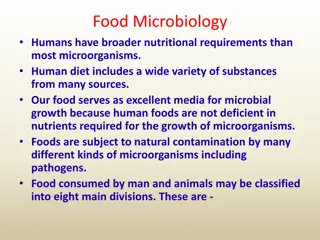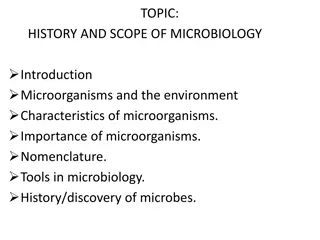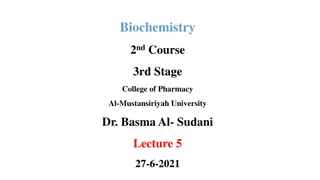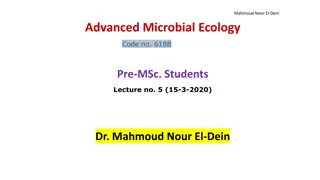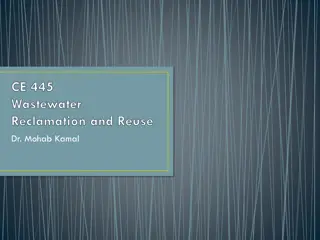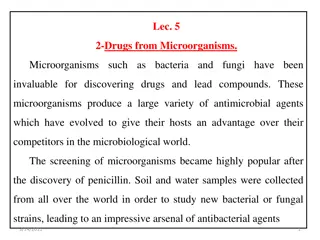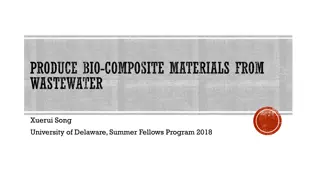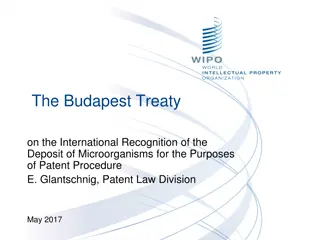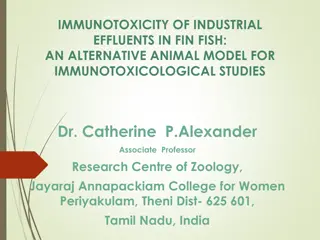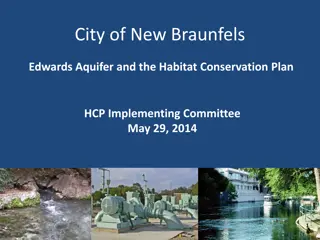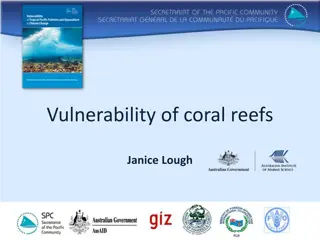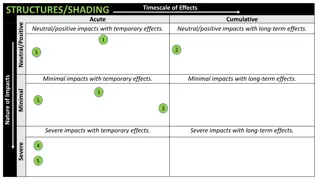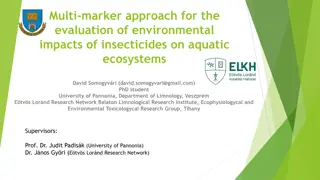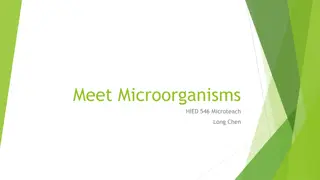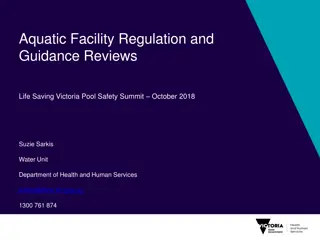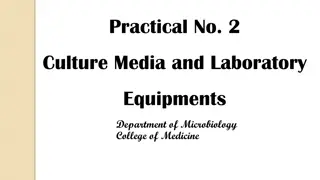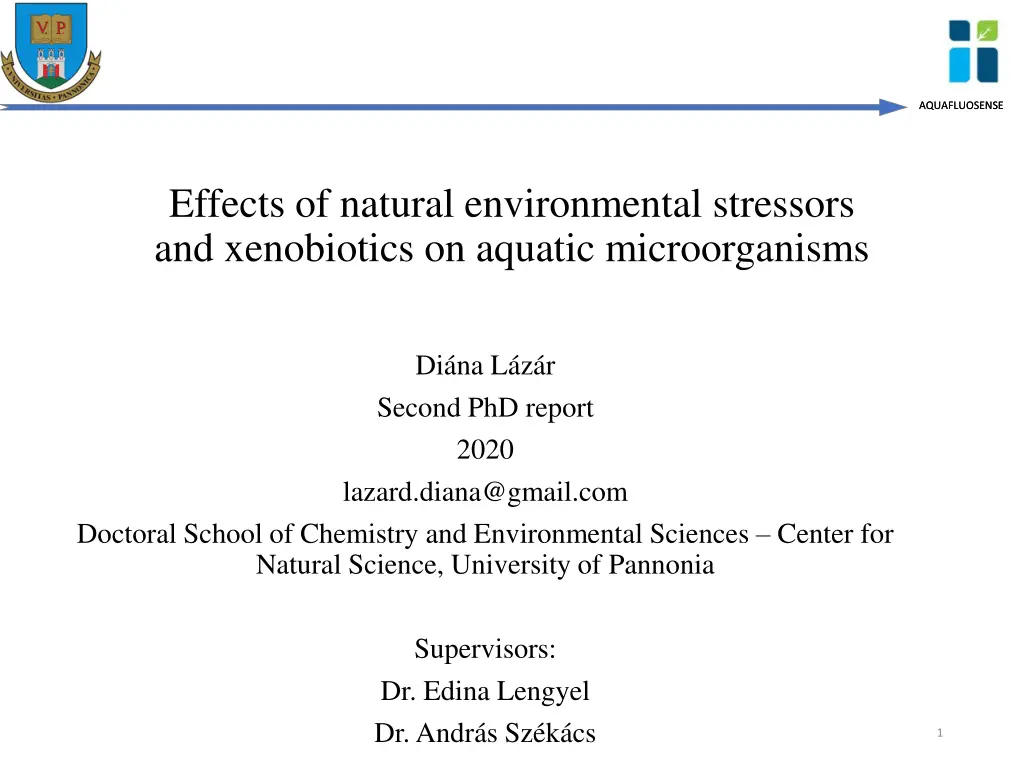
Effects of Natural Environmental Stressors and Xenobiotics on Aquatic Microorganisms
Explore the impact of natural environmental stressors and xenobiotics on aquatic microorganisms in the research report "AQUAFLUOSENSE." The study delves into the role of algae as indicators of water quality, instrumentation used for measurement, and pre-experiment methodologies. Discover insights into the effects of pollutants on aquatic ecosystems and the development of new methods for assessing algae density and diversity.
Download Presentation

Please find below an Image/Link to download the presentation.
The content on the website is provided AS IS for your information and personal use only. It may not be sold, licensed, or shared on other websites without obtaining consent from the author. If you encounter any issues during the download, it is possible that the publisher has removed the file from their server.
You are allowed to download the files provided on this website for personal or commercial use, subject to the condition that they are used lawfully. All files are the property of their respective owners.
The content on the website is provided AS IS for your information and personal use only. It may not be sold, licensed, or shared on other websites without obtaining consent from the author.
E N D
Presentation Transcript
AQUAFLUOSENSE AQUAFLUOSENSE Effects of natural environmental stressors and xenobiotics on aquatic microorganisms Di na L z r Second PhD report 2020 lazard.diana@gmail.com Doctoral School of Chemistry and Environmental Sciences Center for Natural Science, University of Pannonia Supervisors: Dr. Edina Lengyel Dr. Andr s Sz k cs 1
Introduction AQUAFLUOSENSE Leaching Dissolution Precipitation Not appropriate agrotechnical methods 2
PhD work AQUAFLUOSENSE Hat anyagok: cyprosulfamide isoxaflutole Adal kanyag: 1,2-benzizotiazol PAH Algae BOD,COD, TOC Micotoxins http://aquafluosense.hu/index.php 3
Role of algae in water quality AQUAFLUOSENSE Environmental pressures affecting aquatic ecosystems Good indicators of water Rapid development of the algae population Continuous monitoring of algae biomass Algae bloom Source.: K lm n Tapolczai Algae bloom , Keszthely 2019
Algae (chlorophyll-a)measurement AQUAFLUOSENSE Classical methods Development of methods based on the detection of chlorophyll-a fluorescence (e.g. cell counting in B rker-chamber, extraction of photosynthetic pigments) - Time consuming - Costly - Lower sensitivity Objective: Studying the applicability of fluorescence method for algae density and -diversity measurements 5
Instrumentation AQUAFLUOSENSE FluoroMeter Modul (FMM) Chlorophyll Fluorometer (CFM4Ch) Fluorometer with dichroic system (FDS) Source of excitement Laser diode (10 mW) Laser diode (>25 mW) LED Excitement wavelength (nm) Detection wavelength (nm) Number of channels 470 630 635 637 690 (10), 735 (10) 716 ( =43) 708 ( =75) 690 ( =10) 735 ( =10) 716 ( =43) 708 ( =75) 2 4 2 New laser diode, excitement/detection wavelength, >1000 sensitivity, Higher sensitivity, better signal:noise- ratio, two sensors Development Base instrument 6
Pre-experiments AQUAFLUOSENSE 1. Study of reflection Distilled water Algae medium Z8 Allen Diatom Black and white 96-cells microplate, 250 l Continous increase of light intensity Algae in different microplate 2. Effect of dark adaptation 3. Relaxation 7
Reflection measurement during the continuous increase of light intensity AQUAFLUOSENSE Black microplate (Ch3) White microplate (Ch3) 50 150 DW Z8 Allen Diat 40 Fluorescence signal Fluorescence signal 100 30 DW 20 50 Z8 Allen 10 Diat 0 0 0 500 1000 1500 0 200 400 600 Time Time 8
Algae media and culture on different microplate AQUAFLUOSENSE Pseudokirchneriella subcapitata same cell concetration ~1.93*107 cellsml-1 MEDIA ALGAE Mean SD Mean SD 0.2 White White 98 (2.5%) 8 3997.0 Black Black 28.0 ( 8.1%) 0.1 345.5 2.1 Transparent 39.7 (9.7%) Transparent 10.1 409.3 64.6 9
Effect of dark adaption AQUAFLUOSENSE 1.2 Relative fluorescence without dark R = 0.9999 1 adaptation (sign/signMAX) 0.8 0.6 0.4 0.2 0 0 0.2 0.4 0.6 0.8 1 1.2 Relative fluorescence with dark adaptation (sign/signMAX) 10
Relaxation AQUAFLUOSENSE 4000 3500 White Black Transparent 3000 2500 Fm 2000 1500 1000 500 0 0. + 30 s + 1 min + 2 min + 3 min + 5 min Time 11
Comparison of methods AQUAFLUOSENSE Preparation of three-fold dilution series Green algae, Pseudokirchneriella subcapitata Blue-green algae, Microcystis aureginosa Optical density at 750 nm Cell counting with B rker-chamber Ethanol extraction of chlorophyll-a Fluorescence measurement of chlorophyll-a 12
Correlation between methods AQUAFLUOSENSE P. subcapitata FMM CFM4ch FDS OD measurement with spectrophotometry 0.97 0.95 0.99 0.98 0.98 0.95 0.98 0.94 0.98 Cell count with B rker-chamber 0.98 0.97 0.84 0.90 0.95 Extraction of chlorophyll-a 0.99 M. FMM CFM4ch FDS aeruginosa OD measurement with spectrophotometry 0.99 0.98 0.96 0.94 0.99 0.99 0.99 0.95 0.92 Cell count with B rker-chamber 0.99 0.99 0.98 0.94 0.94 Extraction of chlorophyll-a 0.99 13
Limit of detection (LOD), limit of quantitation (LOQ) AQUAFLUOSENSE FMM 4.01*106 CFM4Ch 2.22*103 FDS 3.70*103 LOD (cell/ml) LOQ (cell/ml) 8.12*106 2.65*105 6.10*103 14
Summary AQUAFLUOSENSE Reflection: white, black microplate distilled water, media Dark adaption is not needed Relaxation: more studies Strong positive correlation with classical methods Improvement of detection and quantitation limits Future To separate major algae groups To measure to natural water and on biofilm 15
AQUAFLUOSENSE Thank you for attention! 16

